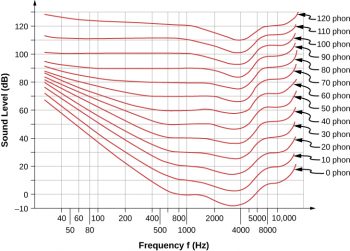
Individual differences in hearing sensitivity are known to affect language, cognitive, and academic outcomes in children (Kronenberger & Pisoni, 2020 McCreery & Walker, 2021 Tomblin et al., 2015), even in cases with very subtle differences in sensitivity from the typical range (McCreery et al., 2020 Moore et al., 2020). The tablet-based hearing assessment provides acceptable estimates of hearing levels for children and adults when diagnostic audiometric assessment capabilities are not available.Īssessment of hearing sensitivity has become increasingly important in research of cognitive psychology and neuroscience. The HTT also met clinical test–retest reliability standards (Cronbach’s α >. 83–.93) for children and adults for all frequencies and across a range of levels of hearing acuity. The results showed that thresholds from the tablet-based assessment were highly correlated with thresholds from the clinical hearing assessment ( r =. Twenty-seven children and 63 adults participated in a standard diagnostic hearing assessment and the experimental tablet-based assessment. Electroacoustic analysis of the hearing assessment application and headphones demonstrated acoustic outputs within established conformity standards for hearing assessment. The goal of this experiment was to validate the NIH Toolbox® Hearing Threshold Test (HTT), a tablet-based hearing assessment available via iPad application that uses consumer-grade headphones, on a clinical sample of children and adults with varying degrees of hearing acuity.
#Auditory sensitivity medical professional
There remains a need for a valid and reliable assessment of auditory sensitivity that can provide estimates of the magnitude of hearing loss, if present, without requirements for professional audiologists, facilities, and equipment that are needed to conduct a diagnostic hearing assessment. Scientists have relied on either self-reported hearing status or the availability of diagnostic hearing assessment in past studies. To be evaluated for sound sensitivity, call 91 to schedule an appointment with our tinnitus and sound sensitivity specialist.Quantifying hearing acuity is increasingly important across a wide range of research areas in the behavioral and neurosciences. Sound therapy has shown to be an effective management option for these types of sensitivities, often in combination with cognitive behavioral counseling. A team approach to management may be recommended. The causes of misophonia and phonophobia are less well-understood. Improvements in loudness tolerance may happen in as quickly as a few weeks. Sound therapy for hyperacusis involves consistent exposure to a stimulus that is gradually increased in volume. Hyperacusis is managed through the process of desensitization.

It is common for hyperacusis to coexist with tinnitus. Hyperacusis may result from a change in auditory function or may occur secondary to brain injury or other health conditions. Over time, this can make the sensitivity worse.

Individuals with sound sensitivity may avoid exposure to common everyday or trigger sounds through lifestyle modifications or overuse of hearing protection. An individual with phonophobia may experience a fearful emotional reaction when exposed to common everyday sounds. Phonophobia – This is a fear that non-harmful volumes will cause discomfort/pain, hearing loss, or tinnitus. Trigger sounds are commonly mouth-oriented (such as breathing, chewing, swallowing) or repetitive (such as dripping, clicking, tapping). An individual with misophonia may experience a negative emotional reaction such as annoyance, disgust, and/or rage when exposed to specific “trigger” sounds. Misophonia is also known as selective sound sensitivity.

Misophonia – This is decreased tolerance for specific sounds, regardless of volume. The volume at which sound becomes uncomfortable or painful may be different across individuals with hyperacusis. An individual with hyperacusis may experience physical discomfort or pain when exposed to common everyday sounds. Hyperacusis – This is a decreased tolerance for volumes that are typically well-tolerated by most people. There are a number of different types of sound sensitivity or decreased sound tolerance. Unfortunately, if you’re someone with sound sensitivity, these sounds can be so disruptive, it’s difficult to live what most people would consider a “normal” life. It’s a noisy world – car horns blaring, people shouting, phones ringing, radios turned up at top volume – these sounds can all be annoying, but for most people, they aren’t intolerable.


 0 kommentar(er)
0 kommentar(er)
